International Steel Prices

Foreign HRC Price Update: Spreads Shrinking
Written by Brett Linton
November 14, 2019
The following calculation is used by Steel Market Update to identify the theoretical spread between foreign hot rolled steel prices (delivered to U.S. ports) and domestic hot rolled coil prices (FOB domestic mills). We want our readers to be aware that this is only a “theoretical” calculation as freight costs, trader margin and other costs can fluctuate, ultimately influencing the true market spread.
We are comparing the SMU U.S. hot rolled weekly index to CRU hot rolled weekly indices for Germany, Italy and the Far East (East and Southeast Asian port).
![]() SMU includes a 25 percent import tariff effective on foreign prices after March 23, 2018. We then add $90 per ton to the foreign prices in consideration of freight costs, handling, trader margin, etc., to provide an approximate “CIF U.S. ports price” that can be compared against the SMU U.S. hot rolled price. Note that we do not include any anti-dumping (AD) or countervailing duties (CVD) in this analysis.
SMU includes a 25 percent import tariff effective on foreign prices after March 23, 2018. We then add $90 per ton to the foreign prices in consideration of freight costs, handling, trader margin, etc., to provide an approximate “CIF U.S. ports price” that can be compared against the SMU U.S. hot rolled price. Note that we do not include any anti-dumping (AD) or countervailing duties (CVD) in this analysis.
German HRC
As of Wednesday, Nov. 13, the CRU German HRC price was $421 per net ton, down $9 from the previous week and down $20 from two weeks prior. Adding tariffs and import costs, that puts the German price at $616 per ton delivered to the U.S. The latest SMU hot rolled price average is $520 per ton, up $30 over last week and up $40 from two weeks prior. Therefore, domestically sourced HRC is theoretically $96 per ton cheaper than imported German HRC; the spread was $138 last week and $161 two weeks ago. The last time the price spread was this small was late August. U.S. prices have held this price advantage for 52 consecutive weeks now.
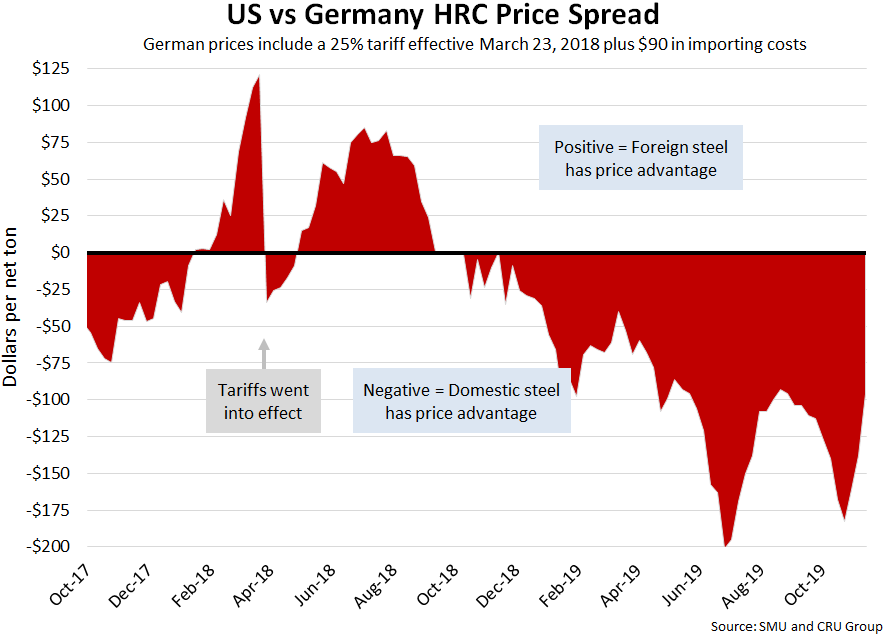
Italian HRC
CRU published Italian HRC prices at $392 per net ton, down $5 over last week and down $12 over two weeks ago. After adding tariffs and import costs, the delivered price of Italian HRC is approximately $580 per ton. Therefore, domestic HRC is theoretically $60 per ton cheaper than imported Italian HRC; the spread was $96 the previous week and $115 two weeks prior. This is the smallest spread seen since mid-May of this year. U.S. prices have now held the price advantage for 32 consecutive weeks.
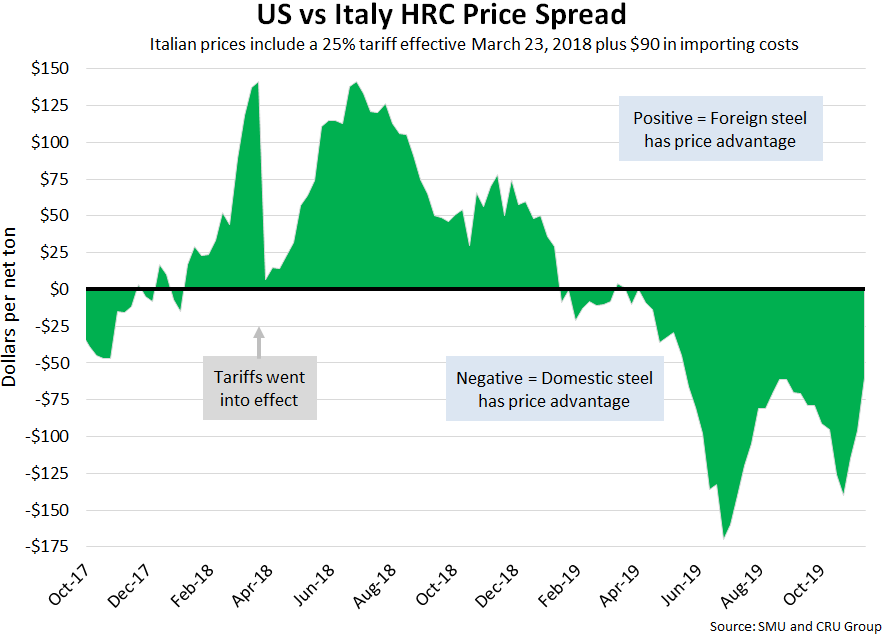
Far East Asian HRC
The CRU Far East HRC price rose $12 over last week at $395 per net ton, up $19 from two weeks prior. Adding tariffs and import costs, the delivered price of Far East HRC to the U.S. is $584 per ton. Therefore, U.S. produced HRC is theoretically $64 per ton cheaper than imported Far East Asian HRC; the spread was $79 last week and $80 two weeks ago. The last time the spread was this small was late-September. Domestic prices have held this price advantage for 40 consecutive weeks.
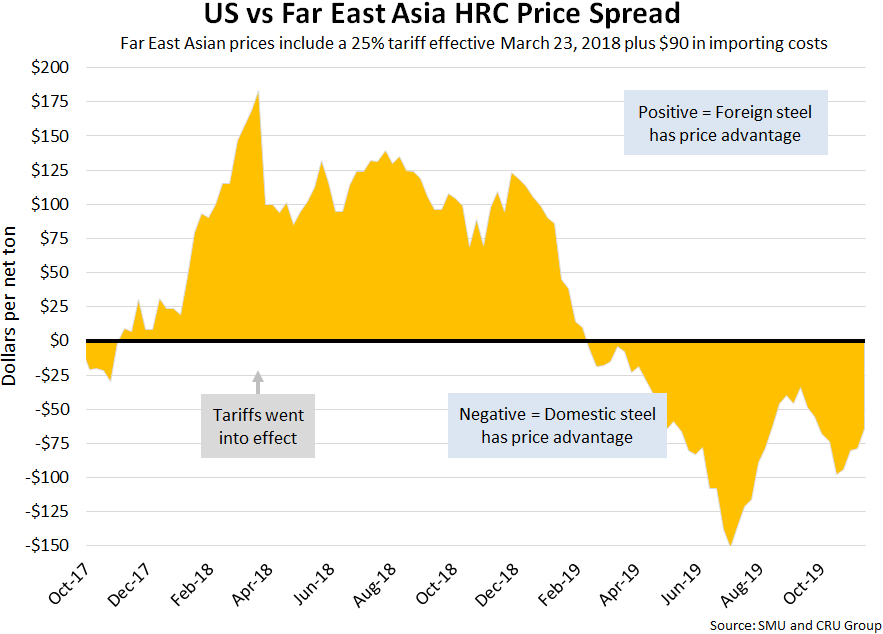
The graph below compares all four price indicies and highlights the effective date of the tariffs. Foreign prices are referred to as “equalized,” meaning they have been adjusted to include tariffs and importing costs for a like-for-like comparison against the U.S. price.
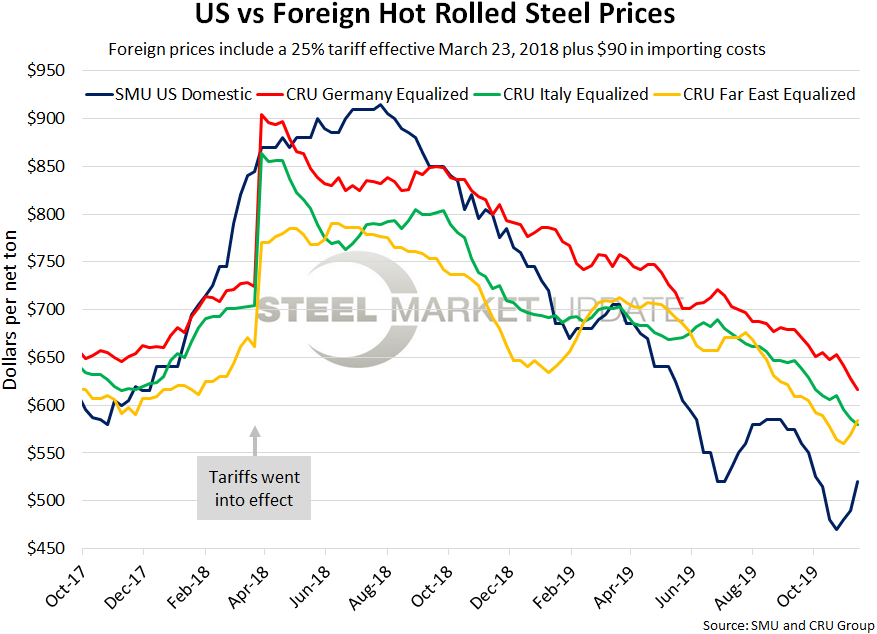
Note: Freight is an important part of the final determination on whether to import foreign steel or buy from a domestic mill supplier. Domestic prices are referenced as FOB the producing mill, while foreign prices are FOB the Port (Houston, NOLA, Savannah, Los Angeles, Camden, etc.). Inland freight, from either a domestic mill or from the port, can dramatically impact the competitiveness of both domestic and foreign steel. When considering lead times, a buyer must take into consideration the momentum of pricing both domestically and in the world markets. In most circumstances (but not all), domestic steel will deliver faster than foreign steel ordered on the same day.

Brett Linton
Read more from Brett LintonLatest in International Steel Prices
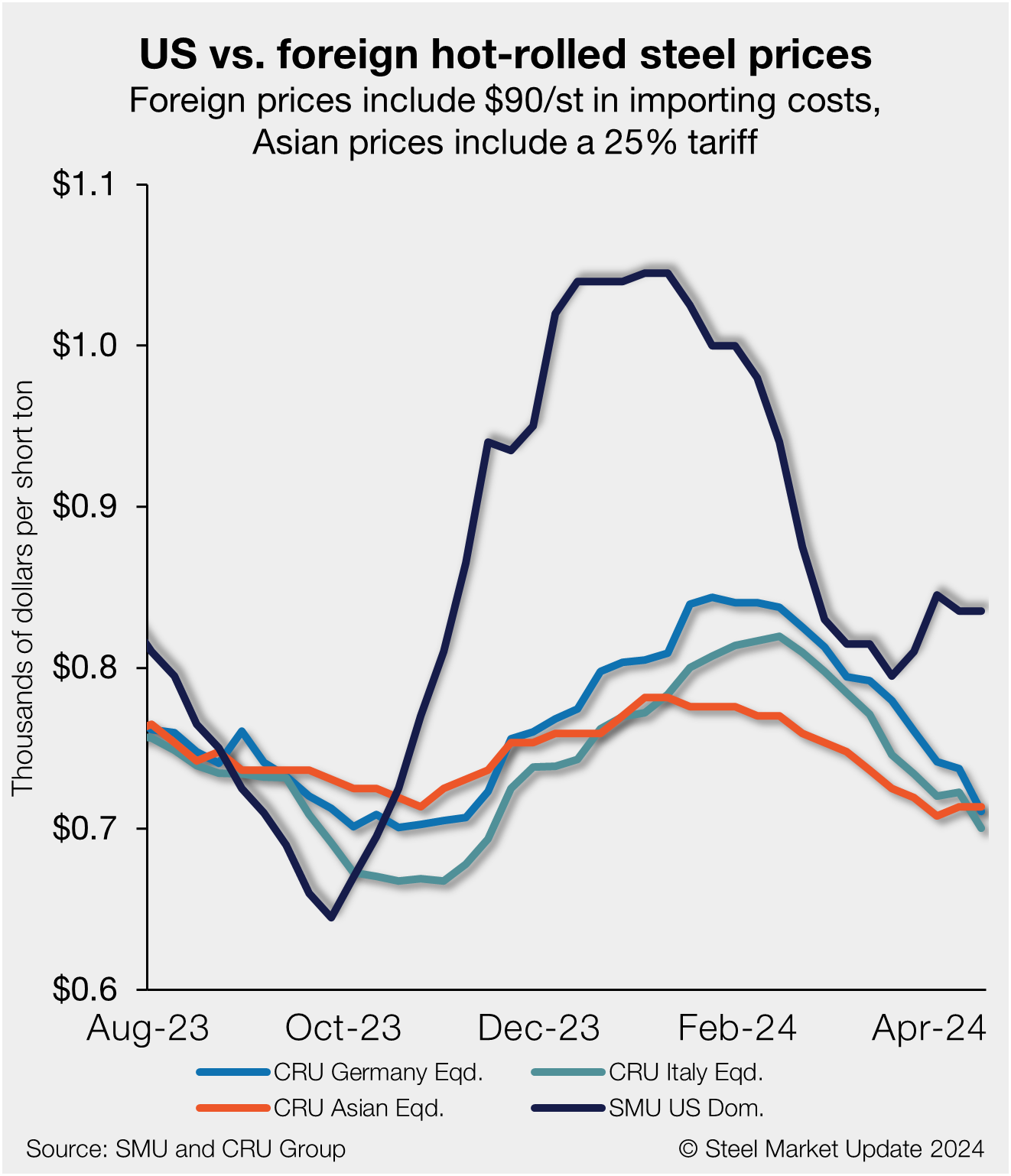
US HR premium widens on lower offshore tags
US hot-rolled (HR) coil has become gradually more expensive than offshore hot band in recent weeks, as stateside prices have stabilized while imports moved lower.
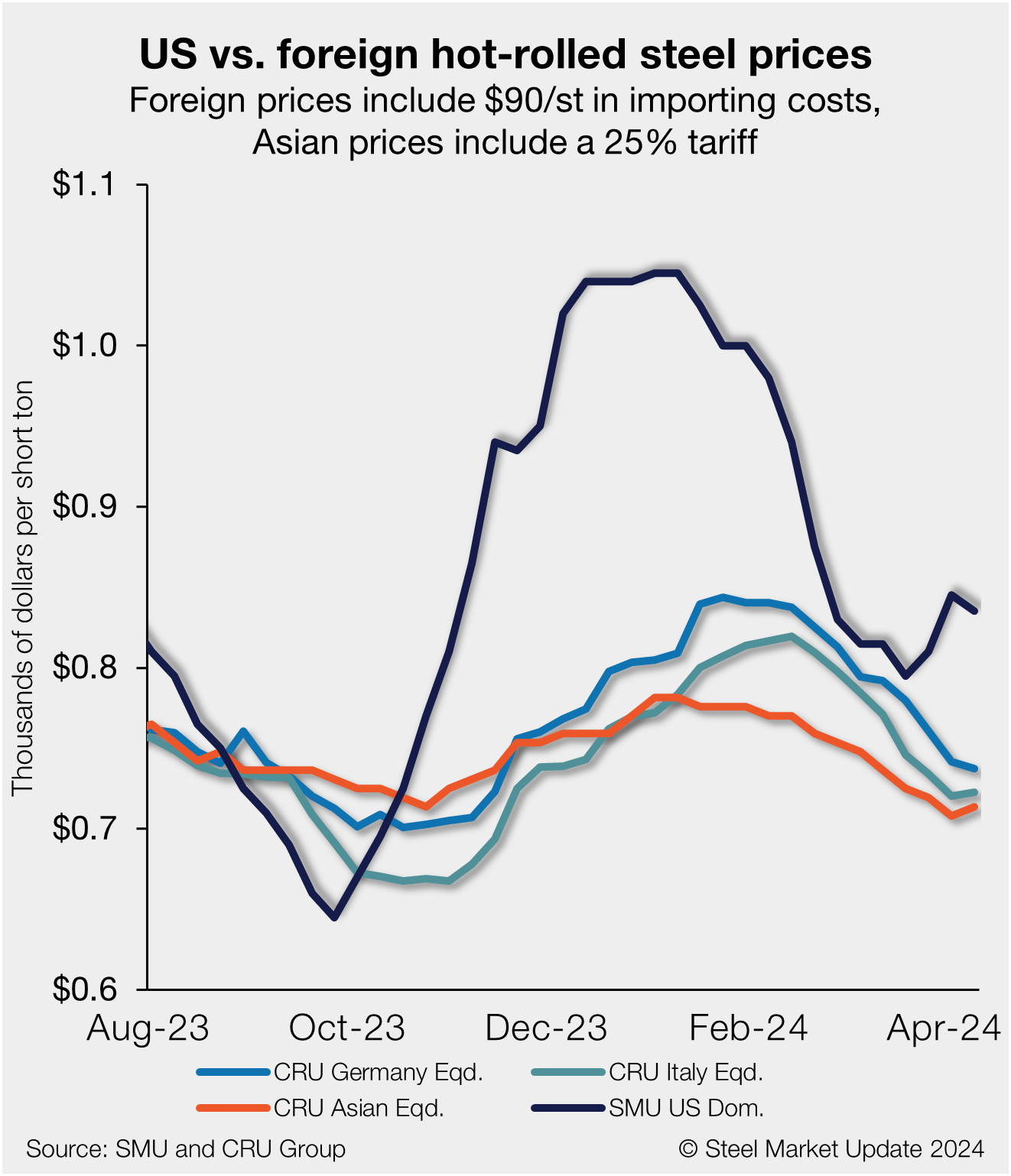
US HR prices slip, though still more expensive than imports
US hot-rolled (HR) coil has become increasingly more expensive than offshore hot band as stateside prices have moved higher at a sharper pace vs. imports.
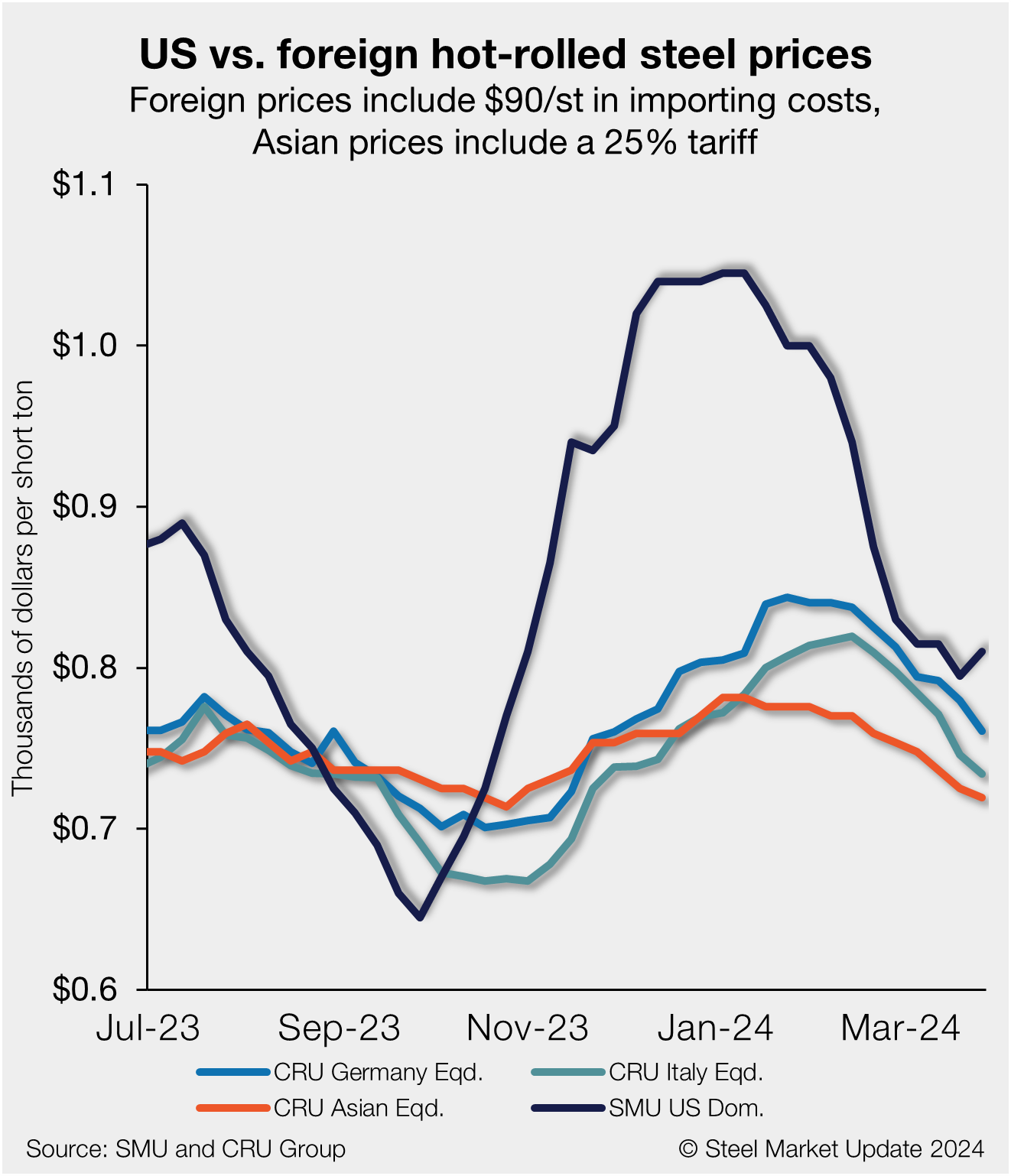
US HR prices rebound, no longer near parity with imports
US hot-rolled coil and offshore hot band moved further away from parity this week as stateside prices have begun to move higher in response to mill increases.
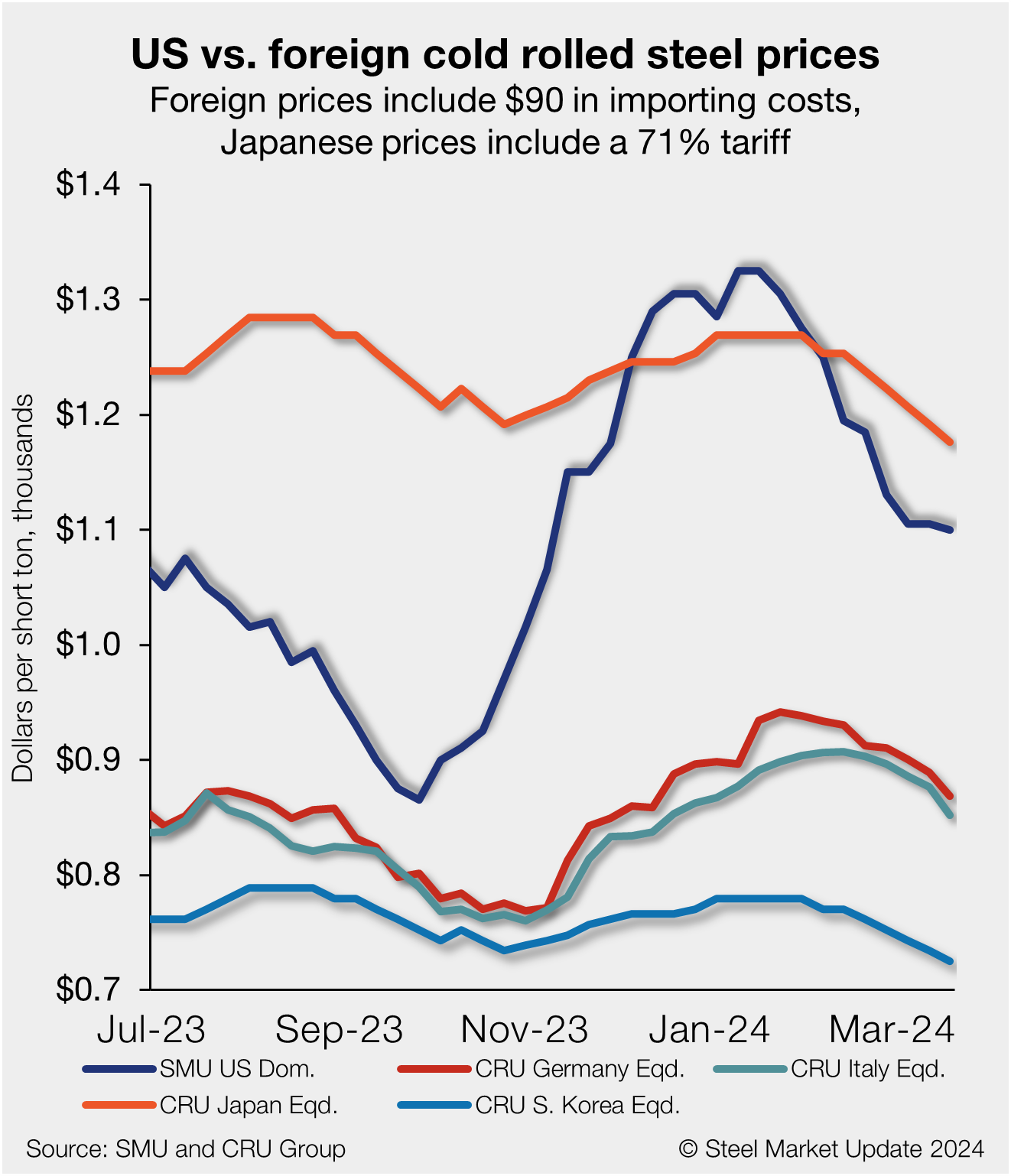
US cold rolled still more expensive than imports
Foreign cold-rolled (CR) coil remains notably less expensive than domestic product even with repeated tag declines across all regions, according to SMU’s latest check of the market.
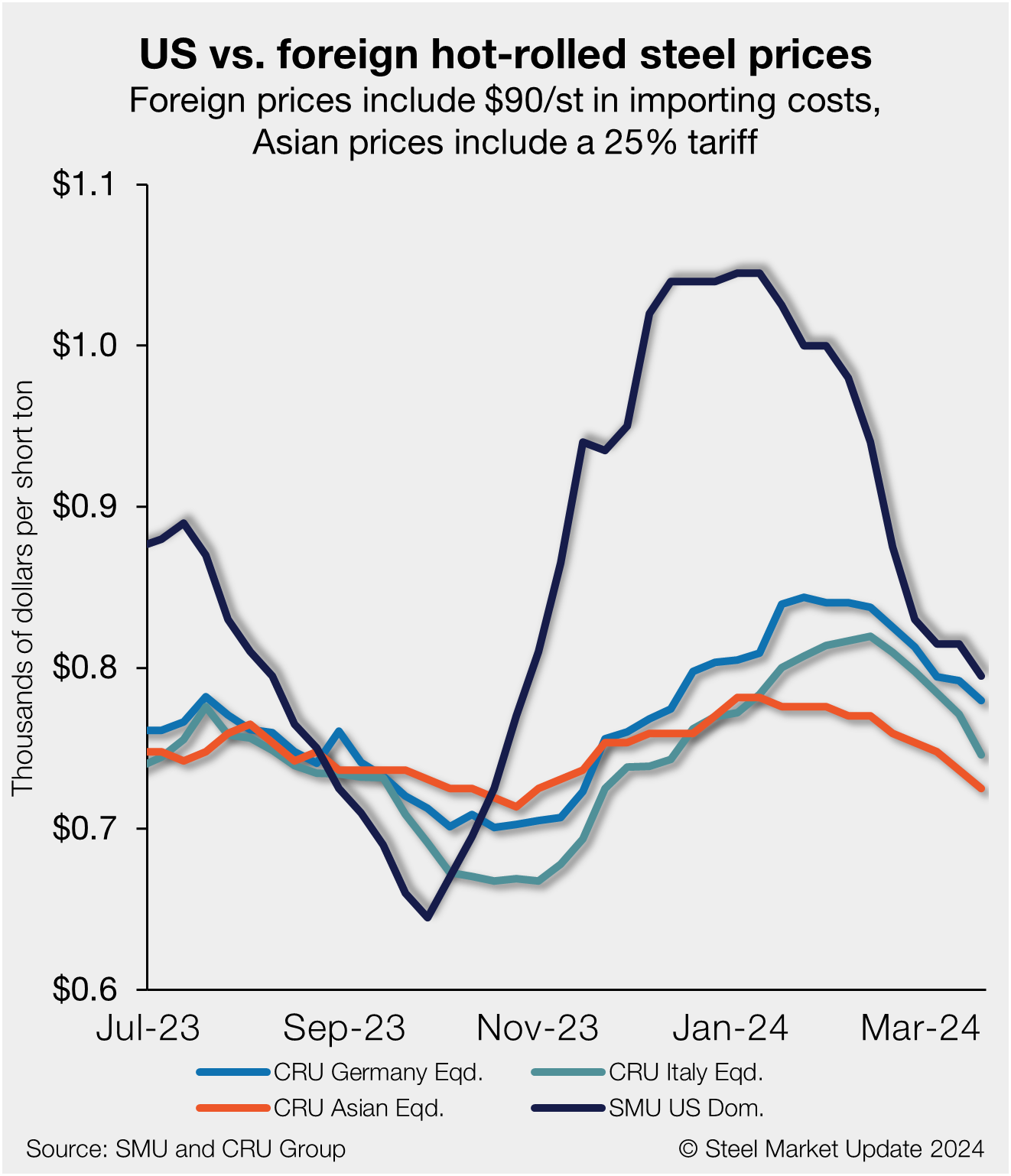
US HRC prices slowly inch toward parity with imports
US hot-rolled coil (HRC) remains more expensive than offshore hot band but continues to move closer to parity as prices decline further. The premium domestic product had over imports for roughly five months now remains near parity as tags abroad and stateside inch down.
